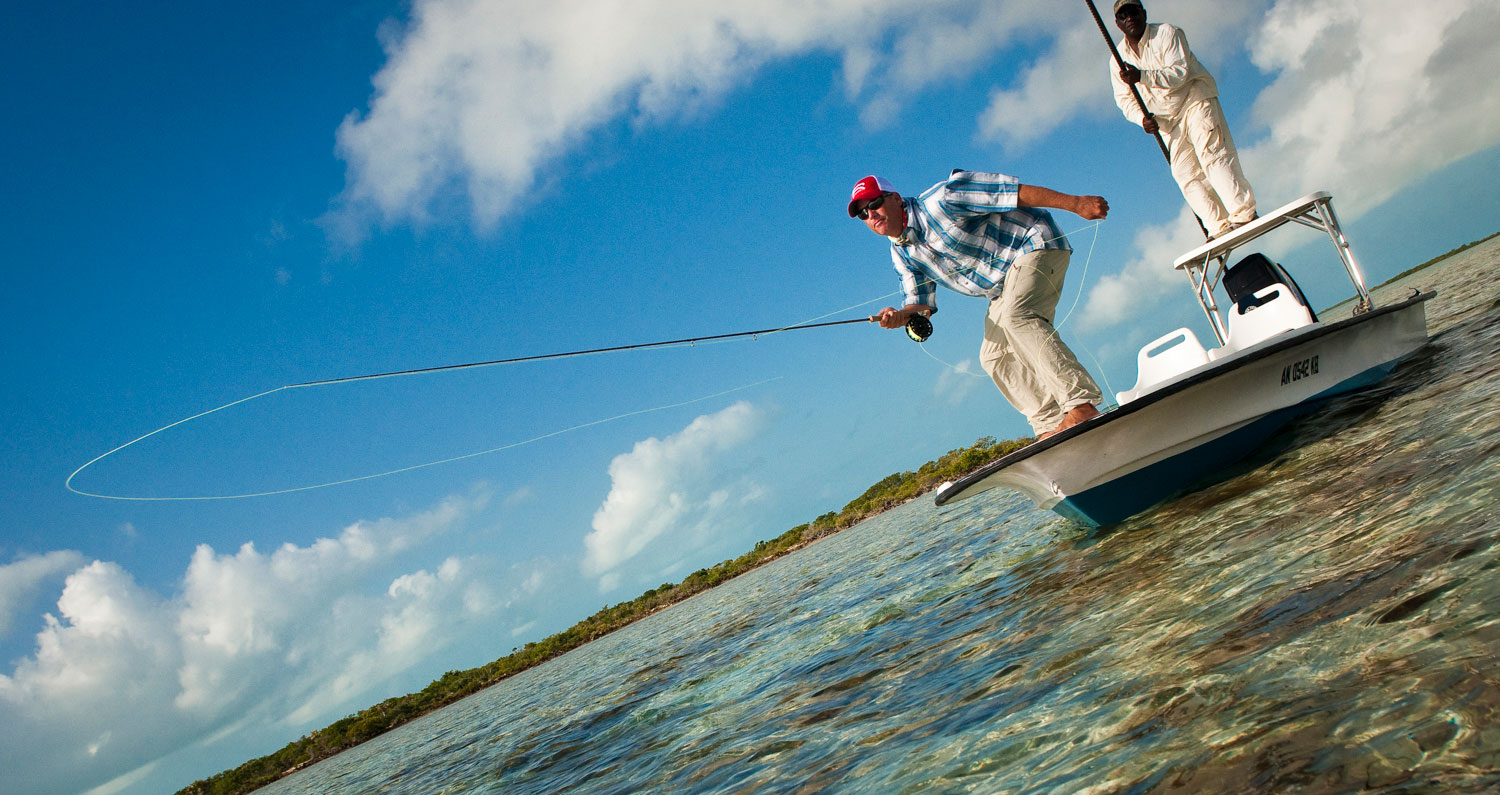By Bruce Chard
When you’re fly fishing in saltwater there is almost always wind.
Saltwater fly fishing demands your A-game. Your presentations have to be spot on and when the wind is howling, it will test your angling mettle. If you’re new to the game, it’s intimidating but having and practicing the right skills can give you the confidence you need to deliver.
Here are three tips that will help you tame the wind
Make tight loops
Having the ability to form tight loops while casting in the salt will help in many ways.
Tight Loops help:
•Control line in the air for better accuracy
•Increase line speed
•Reduce slack in the line during casting and presentation
•Increase distance
•Fight the wind
•Lay your leader and fly out straight with no slack
Whether you are wading or in the skiff, a tight loop is vital to success in the salt. To form a tight loop you need to do the following:
•Keep your rod tip traveling in a straight line during casting stroke
•Make a smooth acceleration of power during your casting stroke
•End your casting stroke with an abrupt stop
Here are a few things to keep in mind:
•The length of your casting stroke should be proportional to the amount of fly line outside the end of your rod tip. A longer cast requires a longer stroke.
•Your pause time in between false casts should be proportional to the amount of fly line outside the end of your rod tip. The more line you carry, the longer you will have to wait for it to straighten out.
•Your Double Haul Length should be proportional to the amount of fly line outside the end of your rod tip. Short cast, short haul. Long cast, long haul.
Follow these tips and watch your loop get tighter before you know it.
Water Hauling
Water Hauling is a saltwater casting technique that many have not been exposed to. The technique is used mostly when strong winds are present off your casting shoulder and when you cannot get away with more than one false cast without eating the fly.
In these strong winds, making more than one false cast without dropping your fly line in the water can be dangerous. To water haul, simply drop the fly line in the water on every forward cast and then use the water tension to help load your rod for the next cast. This loads the rod quickly and creates the line speed needed to cut through the wind.
Water hauling is an advanced technique and mastering it will help you make great presentation in tough wind.
Lay Your Cast Out Straight Into the Wind
Laying your cast out straight helps you to gain control of your fly as soon as it hits the water. If your cast lays out straight with no slack in the system, you are ready to fish your fly right away with no time lost.
Most anglers can get the fly line and leader to lay out straight in light winds, but when the wind dial cranks up the odds of line, let alone the leader, laying out straight go way down.
When making a cast into the wind try to carry all the line needed to reach your target outside the rod tip during false casting. When it’s time to present the fly, form as tight a loop as possible, and do not let go of the fly line. Holding tight to the fly line with your line hand will keep the rod loaded throughout the entire presentation, offering a steady flow of power through the cast and help fight the wind. Practice this, and soon you’ll be laying your line out straight into the wind.
Wind is just another challenge we face as anglers. Don’t let it spoil your next saltwater fishing trip. All you need are the right skills and a little practice to fish like a pro in the wind.
Bruce Chard Gink & Gasoline www.ginkandgasoline.com hookups@ginkandgasoline.com Sign Up For Our Weekly Newsletter!



Good stuff!
Thanks!
Gotta quibble with one thing though:
The way the piece reads, it seems to imply that tight loops will increase line speed.
In my experience, it’s the opposite: line speed improves tight loops…
I am not familiar with how to use the water haul technique in salt water.
Do you have a video of it?